Ideas for Landscaping Property Lines
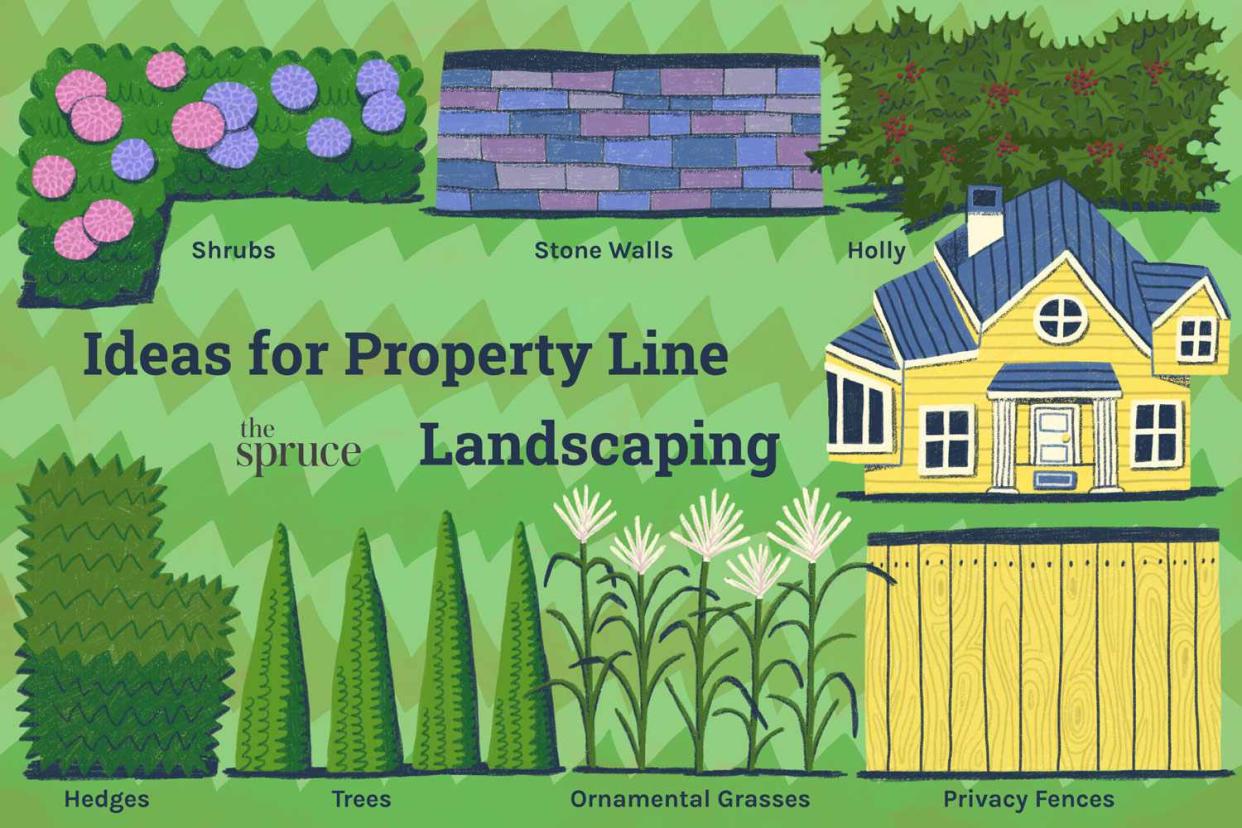
Illustration: Lisa Fasol © The Spruce, 2018
Reviewed by Kathleen Miller
Plants can provide a softer, more natural, and more attractive border between houses than a privacy fence. Before landscaping property lines, always make sure you know precisely where the boundary lies (if unsure, hire a surveyor). While you are at it, research the possible existence of any easements where planting may be restricted. Keep reading for different ways to add landscaping to your property lines.
Green or Colorful Evergreen Shrubs
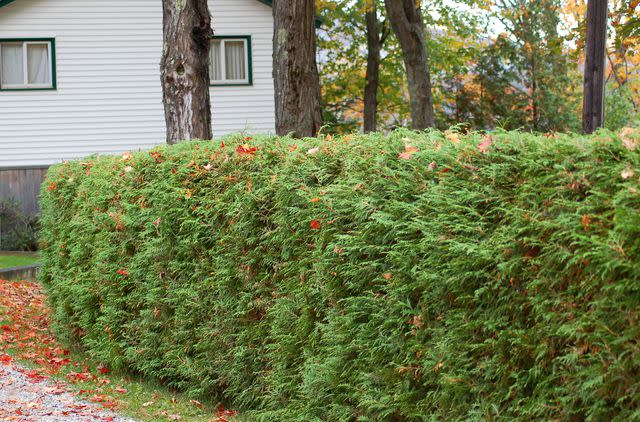
The Spruce / David Beaulieu
It is not difficult to see why evergreen shrubs would play a critical role in landscaping property lines. By definition, evergreens provide foliage to admire all four seasons of the year. And that same trait enables them to offer something else: year-round privacy.
Just because they are called evergreen does not mean you are restricted to the color green with these landscape workhorses. Depending on your tastes and goals, evergreen shrubs (or deciduous ones, for that matter) can be planted in hedges that can be trimmed, planted in rows and left untrimmed, or grown in mixed borders.
10 Best Evergreens for Hedges and Privacy Screens
Mixing Evergreen and Flowering Shrubs
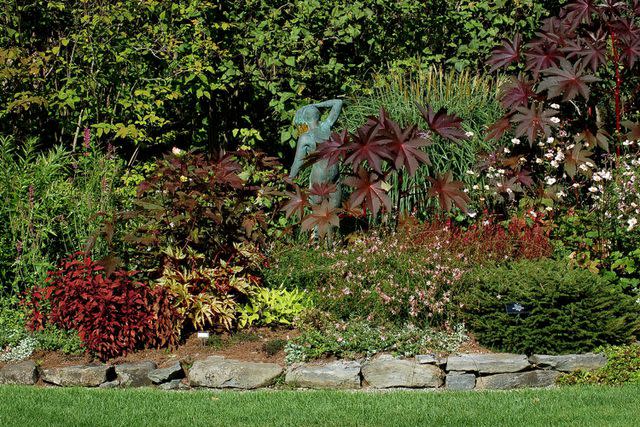
The Spruce / David Beaulieu
Mixing evergreen and flowering shrubs can be an ideal solution for a property border, providing both privacy and a great-looking barrier. You can grow enough evergreens to block the public's gaze (year-round) while injecting enough color with flowering shrubs.
In addition to planting shrubs, you can also mix in long-blooming perennials and other plants of different sizes to create a feast for the eyes. Perfect for smaller properties with restricted space, this option is also budget-friendly as there is no limit to the combinations of what plants go together.
Tall Ornamental Grasses in Borders
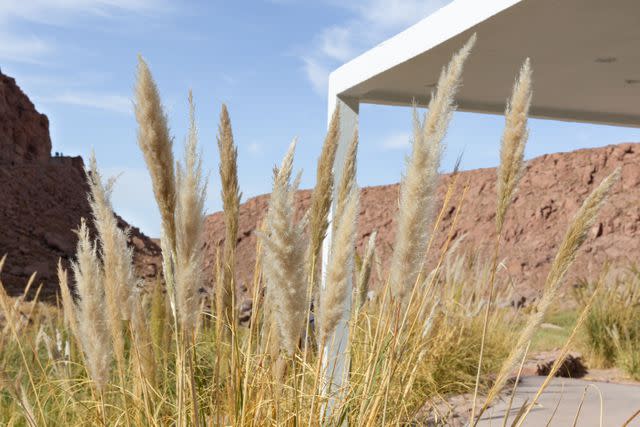
The Spruce / Leticia Almeida
Stir up the pot in your mixed border even further by using some tall ornamental grasses. Two of the best are maiden grass and zebra grass. For gardeners in colder climates, ornamental grasses offer the bonus of providing interest to your border planting during the winter months as well as summer. Another benefit is that they are low-maintenance.
Bamboo is also a member of the grass family and is increasingly used for property lines and as a privacy screen. However, some types of bamboo are invasive, so you have to know what you are doing before planting it.
Holly Shrubs to Deter Trespassers
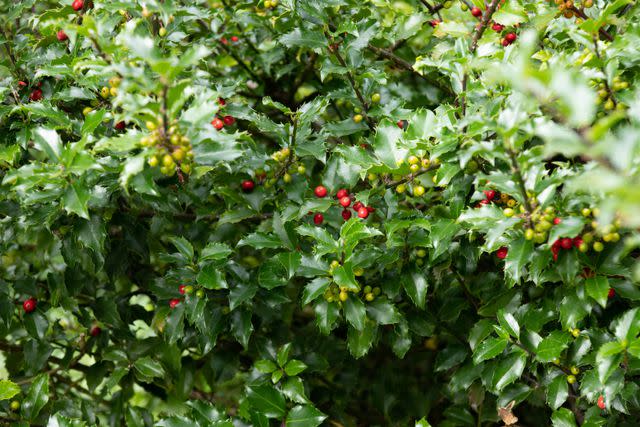
The Spruce / Autumn Wood
A hedge of holly shrubs will not keep a burglar off your property, but the barbed leaves on many hollies are not exactly comfortable to brush up against. This and the prickly look of holly leaves should be sufficient to keep all but the most determined of would-be trespassers at bay.
Hedges for Natural Fences
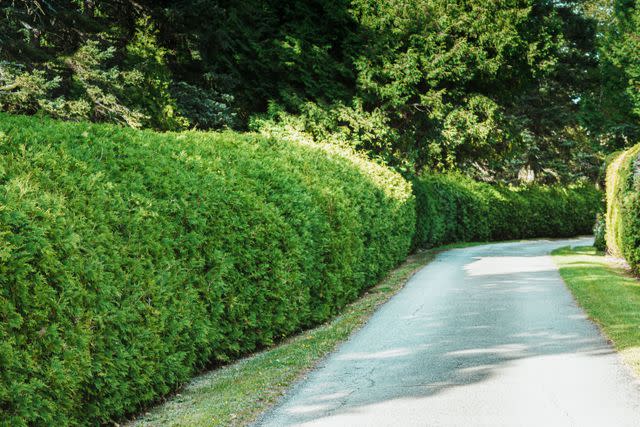
The Spruce / Autumn Wood
If you crave privacy but are not a fan of fences, and you like the neat appearance of straight lines and even surfaces, a hedge can satisfy all your needs. It is a plant-based solution that gives you all the formality and crispness of a hardscape feature. Maintaining hedges so they are neatly trimmed can be a lot of work, so keep that in mind if you choose this option.
Hedges tend to work nicely with larger properties as they require room to grow tall and wide.
Evergreen Trees for Windbreaks
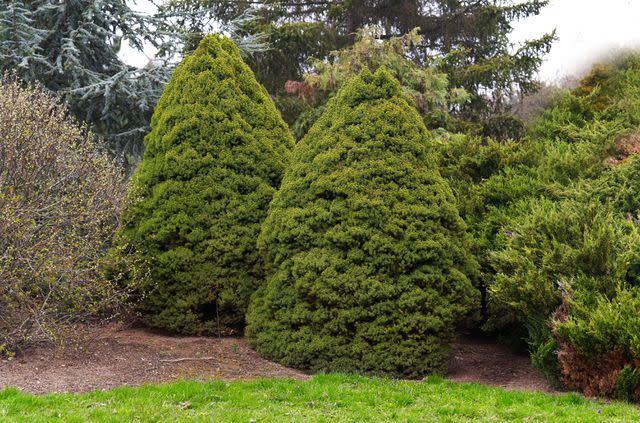
The Spruce / Evgeniya Vlasova
In addition to shrubs and ornamental grasses, a popular plant choice in landscaping property lines is trees. Not only can trees offer privacy, but they can also form windbreaks. If you live in a windy area, planting a windbreak on your boundary may be eminently practical.
An example of a good tree for windbreaks is the Colorado blue spruce tree. Arborvitae is another popular tree for windbreaks. Arborvitae is smaller and somewhat more decorative than classic evergreens like blue spruce.
Frequently Asked Questions
What's the best way to landscape along a fence?
Planting shrubs and flowering bushes are the best ways to add color and beauty to a fence. Just make sure whatever you plant can tolerate partial shade, and does not grow too big or too wide to overwhelm the area.
How can you landscape next to a tree line?
A retaining wall, rock garden, stone path with lights, or greenery that does well in shade, such as succulents, are some landscaping ideas to add creativity to a tree line.
Read the original article on The Spruce.

